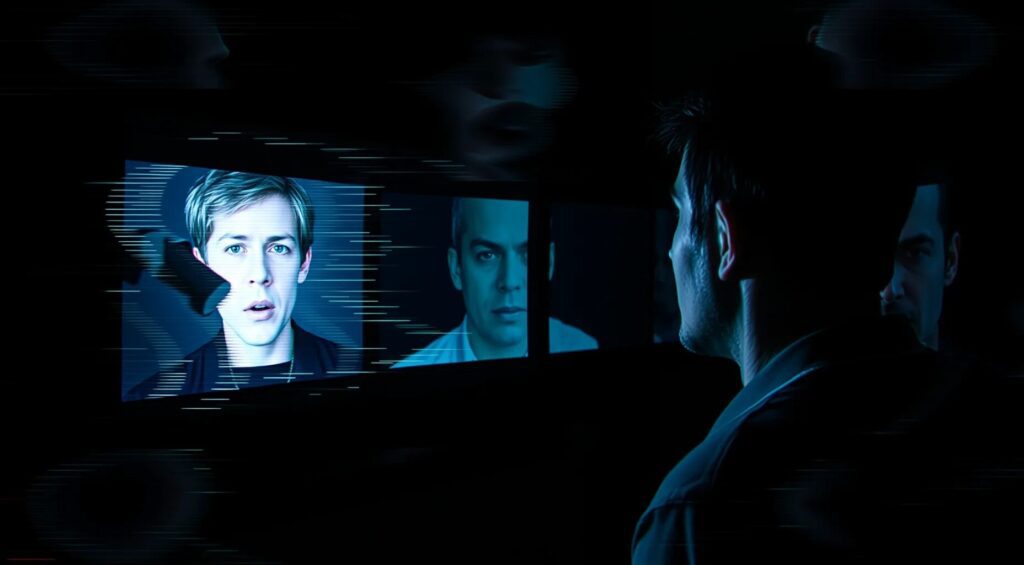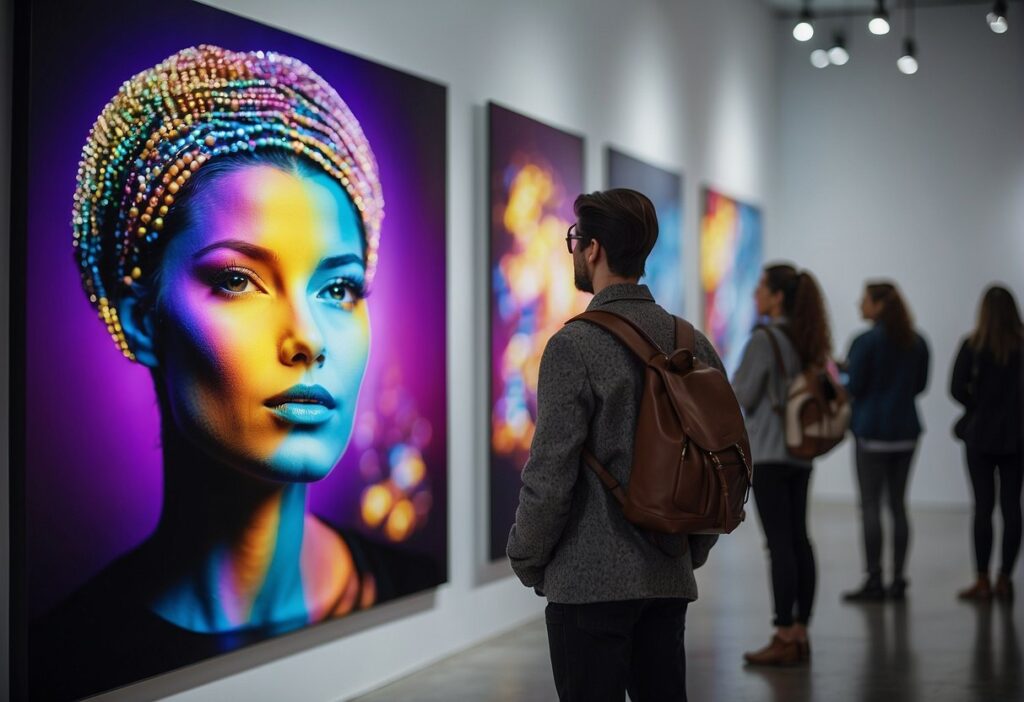
What Are Deepfakes and Why Are They So Convincing?
Deepfakes are hyper-realistic videos or images, created using artificial intelligence (AI) and machine learning, that manipulate or fabricate someone’s appearance, voice, or behavior. The technology used to create deepfakes taps into powerful algorithms that analyze thousands of real images or recordings, making them difficult to detect with the naked eye.
The fascinating part? Deepfakes play on our brain’s natural ability to process visual information. Our minds are hardwired to believe what we see, and this is what makes deepfakes so psychologically disorienting. When you watch a deepfake, the sheer realism can blur the line between what is genuine and what is artificially constructed. The quality is so high that even experts sometimes struggle to tell the difference.
The Rise of Deepfake Technology: A Growing Concern
Deepfakes are no longer a futuristic nightmare—they’re already here, and their growth is rapid. What started as an experimental technology for entertainment purposes has now become a powerful weapon for deception. As AI capabilities evolve, so does the sophistication of these fake videos.
In recent years, we’ve seen deepfakes transition from niche internet curiosities to mainstream threats. Social media platforms are littered with examples of doctored videos—celebrity faces swapped, political speeches altered, and malicious content spread with reckless abandon. This growing concern isn’t just limited to one country or region. It’s a global issue, affecting everything from political stability to the authenticity of everyday conversations.
Manipulation of Reality: How Deepfakes Fool Our Brains
It’s not just the technical brilliance behind deepfakes that causes concern; it’s how they tap into our psychology. Our brains are accustomed to trusting our senses. If we see it, hear it, or experience it firsthand, we tend to believe it without question. Deepfakes, however, exploit this trust. They play into our reliance on visual cues, twisting the reality we’ve come to depend on.
Cognitive science suggests that when we see familiar faces or hear recognizable voices, our brains jump to conclusions about the authenticity of what we’re perceiving. This natural shortcut—something that makes processing information faster—is also where deepfakes take advantage. They slip through our cognitive filters, leaving us questioning what’s real and what’s a clever imitation.
Eroding Trust in Media: When Seeing Isn’t Believing
One of the most profound consequences of deepfakes is their ability to undermine trust—not just in media, but in the fundamental way we perceive the world. The phrase “seeing is believing” has long held weight in human society. Yet, with the advent of deepfake technology, this belief is being shattered.
When we can no longer rely on visual evidence as proof, our entire framework for understanding and validating information collapses. Deepfakes have the potential to fuel conspiracy theories, amplify disinformation, and breed skepticism toward even legitimate sources. If a convincing deepfake can cast doubt on a politician’s speech or a news anchor’s report, what stops us from doubting everything?
Psychological Consequences of Deepfakes: Anxiety and Mistrust
As deepfakes become more prevalent, the psychological toll on individuals and society as a whole grows. The constant uncertainty about whether a video or image is real can lead to heightened levels of anxiety. People may become overly skeptical, doubting what they see and hear, even from trusted sources.
This erosion of trust seeps into our everyday lives. Relationships, political beliefs, and personal identities all hang in the balance when deepfakes challenge the authenticity of visual and audio experiences. Imagine a world where you’re not sure if your friend actually posted that video, or if a public figure truly said those incendiary words. The sheer confusion and cognitive overload create a mental fatigue that is hard to shake.
Deepfakes in Politics: Shaping Public Opinion Through Deception
One of the most alarming aspects of deepfakes is their potential use in politics. These AI-generated videos can make it appear as if a politician has said or done something they never actually did. This creates a dangerous weapon in the battle for public opinion. In an age where political divisions are already sharp, the introduction of deepfakes can further polarize societies by spreading false narratives and disinformation.
Imagine a scenario where, days before an election, a deepfake of a candidate emerges, showing them making offensive remarks. Even if the video is debunked, the damage is often irreversible. Public trust is eroded, and the targeted individual’s reputation may suffer greatly. This manipulation of visual content could significantly influence election outcomes or public policies by tapping into people’s emotional responses, which are often quicker than their critical thinking.
Social Media’s Role in Spreading Deepfakes: A Dangerous Game
Social media platforms act as the perfect breeding ground for deepfake dissemination. Videos are shared at lightning speed, often without fact-checking or verification. This environment makes it incredibly easy for deepfakes to spread like wildfire, reaching millions in a matter of minutes.
The algorithms on these platforms also tend to favor content that elicits strong emotional reactions, which deepfakes are often designed to do. Outrage, shock, and disbelief drive engagement, leading users to share these videos before they’ve had a chance to question their authenticity. Once a deepfake is out in the digital wild, it’s nearly impossible to retract or completely erase it, furthering the damage done by these deceptive visuals.
How Deepfakes Impact Personal Relationships and Reputation
Beyond politics and media, deepfakes have a more intimate and personal side—damaging relationships and reputations. Imagine someone creating a deepfake that makes it look like you were in a compromising situation or said something controversial. In an instant, your personal or professional reputation could be jeopardized.
For many, deepfakes are not just a societal issue but a very personal one. Revenge porn, blackmail, and targeted harassment have all taken new forms through the use of deepfakes. Once your image or voice is manipulated, it’s nearly impossible to undo the harm caused, leading to broken trust in both personal and professional spheres.
Can We Still Trust the News? The Media’s Struggle with Deepfakes
The role of the news media is to inform, investigate, and present facts. But with the rise of deepfakes, even the most trusted news sources are vulnerable to doubt. As more people become aware of how easy it is to manipulate video and audio, skepticism about news reports increases, even when those reports are based on verified facts.
This erosion of trust in media outlets leads to a post-truth environment, where individuals only believe what aligns with their existing views. If a deepfake video is spread, casting doubt on a legitimate news report, the damage is already done. It makes it more difficult for journalists to convey the truth in a sea of digital deception. The once clear-cut distinction between fact and fiction begins to blur, pushing society closer to a crisis in journalism.
The Cognitive Dissonance of Knowing Something is Fake Yet Believing It
Here’s the tricky part about deepfakes—sometimes, even when we know something is fake, we still react as if it’s real. This phenomenon is rooted in a concept called cognitive dissonance, where our brain struggles to reconcile conflicting information. When we see a deepfake video of a celebrity, politician, or even someone we know, part of our brain registers it as false, but the visual stimuli can still provoke emotional reactions.
This psychological tug-of-war creates confusion. The deepfake may conflict with what we logically understand, but the realism can lead to emotional belief. Our brains, in short, get tricked by what looks and sounds familiar, leaving us in a weird limbo where rationality and gut feelings don’t match up. In a world filled with deepfakes, this cognitive dissonance can leave many feeling disoriented and unsure of how to respond.
How Deepfakes Play into Confirmation Bias and Echo Chambers

Deepfakes don’t just fool us—they play directly into our confirmation bias, the tendency to believe information that supports our existing beliefs and reject what contradicts them. If a person is already predisposed to dislike a particular public figure, a deepfake of that individual doing something scandalous will confirm their suspicions, no matter how false the content may be.
This phenomenon is worsened by the echo chambers we often find ourselves in online. Social media algorithms tend to show us content that aligns with our views, meaning deepfakes can spread rapidly within these closed circles, reinforcing biased perceptions. When videos, whether real or fake, continuously affirm what people already believe, it becomes nearly impossible to break through the layers of misinformation. The echo chamber effect, amplified by the realism of deepfakes, can radicalize views and create deeply entrenched divisions in society.
The Ethics of Creating and Sharing Deepfakes: Where’s the Line?
Deepfake technology brings up a host of ethical dilemmas. While some creators use deepfakes for entertainment or satire, others weaponize them for manipulation, harassment, or deception. This raises an important question: where do we draw the line?
On the one hand, deepfakes represent a fascinating leap in technological innovation, showcasing the impressive capabilities of AI. On the other hand, the misuse of this technology can have devastating consequences, from ruining careers to inciting public panic. The ethical challenge is in balancing creativity and freedom of expression with the responsibility to avoid causing harm.
Regulating deepfakes is complex. Should the creation of all deepfakes be banned, or should there be context-specific restrictions? While laws are starting to catch up, the question remains: how do we enforce ethical standards in a digital world where anyone can manipulate reality?
Mitigating the Damage: Tools and Technologies to Detect Deepfakes
Thankfully, as deepfake technology evolves, so do the tools designed to combat it. Researchers and tech companies are working on developing deepfake detection tools that can help identify fabricated videos and images. These detection systems analyze subtle inconsistencies, such as unnatural eye movements, glitches, or irregular lighting, to determine whether a video is genuine.
Organizations like Microsoft and Facebook have launched initiatives aimed at detecting and flagging deepfakes before they go viral. The goal is to build AI-powered defenses that can keep up with the rapid advancements in deepfake creation. However, this is an ongoing battle, with developers of both deepfakes and detection tools constantly racing to outsmart each other.
While detection technologies offer hope, they are far from perfect. AI-generated content is getting better at mimicking reality, making detection more difficult. Nevertheless, having these tools available to media companies, law enforcement, and the general public could help mitigate the damage deepfakes can cause.
Education and Awareness: How to Protect Ourselves from Deepfake Manipulation
In addition to technological solutions, education plays a crucial role in combating the effects of deepfakes. People need to become more media-literate and develop the skills to question the authenticity of the content they encounter. Simply knowing that deepfakes exist is the first step to becoming more skeptical and careful about what we choose to believe and share.
Teaching individuals how to critically evaluate videos and images—whether it’s checking for suspicious sources, reverse image searching, or understanding the context of a video—can help reduce the spread of misinformation. Public awareness campaigns can also play a significant role in educating people about how to spot and report deepfakes.
The more we understand the psychological tricks deepfakes play on us, the better equipped we’ll be to resist their influence. This awareness won’t eliminate deepfakes, but it will make society more resilient to their effects, helping individuals approach the digital content they encounter with a healthy dose of skepticism.
The psychological damage caused by deepfakes is rooted in the manipulation of what we perceive as real.
— AIC
The Future of Deepfakes: A Constant Battle Between Technology and Truth
Looking ahead, deepfakes are unlikely to disappear. Instead, the technology will continue to evolve, becoming more sophisticated and harder to detect. This presents an ongoing challenge: how do we protect the truth in a world where deception is becoming more effortless by the day?
The future may see even more advanced tools for detecting and combating deepfakes, but it’s clear that the battle between truth and artificial manipulation is here to stay. We can expect governments, tech companies, and social media platforms to collaborate more closely in regulating and identifying deepfakes, while AI researchers continue to develop new defenses.
However, as with any new technology, the solutions to deepfakes won’t come solely from machines. As society adapts to the reality of manipulated media, a combination of technological innovation, legal regulation, and public awareness will be required to navigate the complex ethical and psychological terrain of deepfakes.
Rebuilding Trust: Can We Ever Restore Confidence in Visual Media?
The widespread use of deepfakes has shaken our trust in visual media. However, trust can be rebuilt, albeit slowly. Transparency will be key moving forward. Media outlets, governments, and tech companies need to be upfront about how they handle deepfakes and what steps they’re taking to ensure the accuracy of the content they share.
Additionally, strengthening laws and regulations against malicious deepfake use will play a role in restoring confidence. When people know there are consequences for creating and distributing harmful deepfakes, there may be less willingness to engage in this behavior.
Finally, fostering a culture of skepticism and encouraging people to question the authenticity of what they see will help mitigate the damage caused by deepfakes. If society can adapt to this new reality, we might eventually find ourselves in a more resilient media landscape, where truth and deception are more easily distinguishable, even in the face of sophisticated technology.
Conclusion: Deepfakes—A Technological Marvel and a Societal Challenge
Deepfakes are a fascinating yet troubling development in our modern, tech-driven world. They expose how easily reality can be manipulated and how vulnerable we are to believing what we see. The psychological impact of deepfakes—eroding trust, spreading misinformation, and manipulating public opinion—is a reminder of the delicate balance between innovation and ethical responsibility.
As we face the future of deepfakes, one thing is clear: while we cannot stop this technology from advancing, we can equip ourselves with the tools and knowledge to navigate this new digital landscape. By fostering awareness, developing detection tools, and creating a culture of skepticism, society can adapt to this ever-evolving challenge. In the end, truth may be harder to find, but it’s a fight worth pursuing.
Deeptrace Report: The State of Deepfakes (2019)
This comprehensive report from Deeptrace, a cybersecurity company, provides in-depth analysis and statistics on the rise of deepfakes and their potential impact on society.
MIT Technology Review: Deepfakes Are Now Being Used to Create Fake Social Media Profiles
This article delves into the various uses of deepfake technology, including the creation of fake social media identities, and its broader implications.
Brookings Institution: How to Combat Deepfakes—Before It’s Too Late
Brookings explores the threat deepfakes pose to democracy, society, and global security, and offers potential solutions.
The Verge: Inside the Deepfake Detection Algorithms Facebook is Building
Learn about Facebook’s efforts to counter deepfakes by building detection algorithms and launching deepfake detection challenges.
NPR: How Deepfakes Could Change Politics and What We Can Do About It
NPR’s report covers the political ramifications of deepfakes, including their use in disinformation campaigns and electoral interference.
The Guardian: A Complete Guide to Deepfakes and What They Mean for the Future of Truth
The Guardian offers a broad overview of deepfakes, their implications, and the future challenges they pose to media and truth.
Carnegie Endowment for International Peace: Deepfakes and Synthetic Media
This resource provides insights into how synthetic media, including deepfakes, might affect global security, with a focus on mitigating risks.
AI Now Institute: Algorithmic Accountability and the Threat of Deepfakes
AI Now examines the broader social and political implications of algorithmic technologies, including deepfakes, and how they affect public trust.





